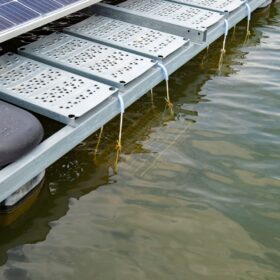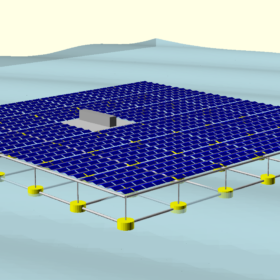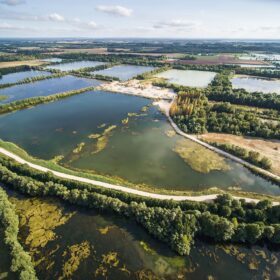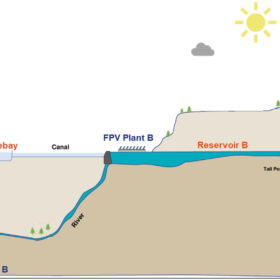Topography-induced shading on floating PV
Researchers in Turkey have studied the impacts of topography-induced shading on floating PV at the Ayvalı hydroelectric power plant and have identified differences between the regions with the highest and lowest electricity production potential.
Floating solar positively affects aquatic environments, says BayWa re
German renewable energy developer BayWa re has collected scientific data on aquatic fauna, water quality, and avifauna from several environmental impact monitoring studies on eight of its operational floating PV facilities in Europe. It has found the artificial habitats under the panels offer protection to some animal species and improvements to water quality.
Australian firm secures PPA for 700 MW of floating PV plus battery in Sri Lanka
Australia’s United Solar Group has secured a power purchase agreement (PPA) for 700 MW of floating solar and a 1.5 GWh battery project in Kilinochchi, Sri Lanka.
Passive cooling technique for floating PV systems
An international research team has built a cooling tech consisting of heat absorber pipes that are thermally connected to the PV module, heat releaser pipes that exchange heat with the water body, a series of connecting pipes, and a coolant reservoir. The system claims to create a continuous fluid flow that dissipates heat from the PV cells to the surroundings.
Global inventory map of floating photovoltaics
A Chinese-US research group has created an up-to-date spatial datase to identify floating PV systems across the globe. The new tool uses Google Earth images, Sentinel satellite imagery, and multiple spectral indices.
Assessing complementarity of offshore hybrid wind-solar projects in Belgian North Sea
A group of researchers from Belgium performed a complementarity analysis for offshore wind power combined with floating photovoltaics. The team found that complementarity is strong on weekly and monthly timescales, and that it can increase under certain climate change scenarios. Assuming a full permanent transmission loading capability, the researchers calculated that a 3 GW floating solar plant added to the existing wind power in the Belgian North Sea would increase the renewable electricity yield by 47% while occupying only a limited surface area.
Q Energy begins work on Europe’s largest floating PV plant
Q Energy says it will deploy a 74.3 MW floating PV array in northwestern France. The project should take around 18 months to complete, with commissioning scheduled for 2025.
New floating PV system design from Brazil
A Brazilian consortium is testing a new floating PV system design on a lake in the state of Sao Paulo. The facility is setting standards for future development of floating arrays in Brazil.
Teralight complete Israel’s largest floating PV project
Teralight has completed Israel’s largest floating PV project, deploying 31 MW of capacity on two water reservoirs in the northern part of the country, at an estimated project cost of $33.8 million.
Hybrid hydro-PV systems increase producer profits by up to 18-21% in sub-Saharan Africa
A team of researchers from Norway analyzed a case study of a cascade hydropower system hybridized with both floating and ground mounted PV under sub-Saharan African market conditions. It found that hybrid systems can reduce seasonal variability in renewable energy generation and increase annual producer profits under both PPA and spot market schemes.









